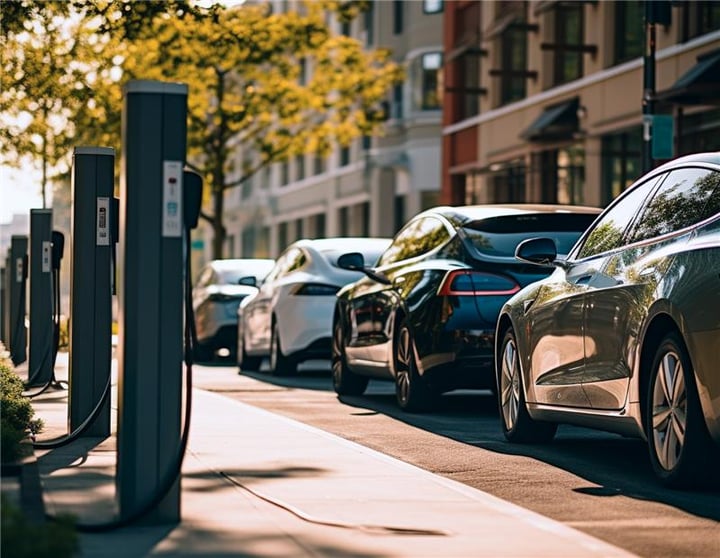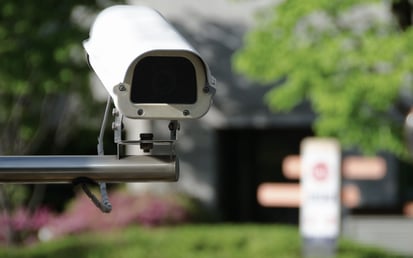Simplifying VAT Complexity in Cross-Border EV Charging: The Riverty Advantage
If you're managing EV charging across borders, VAT is a quiet killer. Rates shift between markets, reverse charge applies inconsistently, and consolidated invoicing gets messy—fast.

Now imagine a family road-tripping from the Netherlands to Portugal in their EV. For them, it’s seamless: tap, charge, go. Behind the scenes, every session triggers different VAT logic—depending on country, supplier setup, and customer structure.
Multiply that by thousands of sessions a day, and you’ve got finance teams buried in reconciliation work.
We break down how Charging Point Operators (CPOs) and eMobility Service Providers (ESMPs) can simplify VAT complexity at scale—using automation to reduce risk, improve billing accuracy, and bring control back to finance operations.
Cross-border charging, local VAT chaos for CPOs
Every time the family plugs in during their European road trip, the Charge Point Operator (CPO) behind that session faces a new layer of VAT complexity.
Each country applies its own rules—and sometimes, each region within it. A few examples:
- Belgium & Luxembourg: Typically 21%, but local regulations can shift that rate.
- France: Anywhere from 5.5% to 20%, depending on supply type and policy.
- Spain & Portugal: Regional tariffs and exemptions make things even more tangled.
CPOs are responsible for applying the correct VAT rate based on where the charge happens. And when serving customers through third-party EMSPs, that means ensuring billing reflects the location’s tax requirements—not just their own.
Without deep VAT expertise and automation, the burden is real: slow invoicing, compliance risk, and hours lost to manual reconciliation and corrections.
EMSPs don’t get it easier: Cross-border VAT makes invoicing a mess
The end-user experience might be seamless for our vacationing family—but for the EMSP handling the billing, cross-border travel turns into a reconciliation headache.
Here’s what they’re up against:
- Place of supply: Each charge is taxed based on where it happened. If the EMSP isn’t established in that country, the reverse charge mechanism kicks in—and with it, more never-ending claims.
- Multiple VAT rates: Each session may carry a different rate, so charges must be tracked, taxed, and applied with precision.
- Consolidated invoicing: After the trip, the EMSP must issue a single invoice covering multiple countries—each with distinct VAT requirements.
Miss a step, and they risk delayed payments, failed audits, or even financial penalties. At scale, these risks compound fast.
Cross-border VAT: Where the real complexity starts
The EV charging supply chain might look simple—but behind the scenes, tax treatment gets tricky fast.
Because the EU Principal VAT Directive treats electricity as a supply of goods, every cross-border charge must comply with local VAT rules tied to the point of delivery. That creates a ripple effect:
- Reverse charge mechanism: If an EMSP isn’t established in the country where charging takes place, they—not the CPO—are responsible for reporting and remitting VAT. That means deep knowledge of local tax law and flawless record-keeping.
- Invoicing requirements: Each invoice must indicate if the reverse charge applies, include valid VAT IDs for both sender and recipient, and cite the correct legal references. Any misstep risks delays, disputes—or worse, audits.
This isn’t just compliance. It’s operational risk hiding in your revenue streams.
How Riverty makes cross-border VAT manageable for CPOs
Cross-border billing shouldn’t require a tax expert on your finance team. Riverty’s EV Charging Finance Suite automates complex VAT logic at scale—so your team can focus on growing the network, not troubleshooting invoices.
- Automatic VAT logic, country by country: Our platform applies the right VAT rate based on each charging session’s location, saving hours of manual lookups and reducing the risk of miscalculations.
- Streamlined invoicing, built in: Generate VAT-compliant invoices with all required fields, including reverse charge flags and tax IDs—without second-guessing local rules.
Let us handle the tax complexity—so you can scale internationally with confidence.
Empowering EMSPs: Riverty’s Role in Simplifying VAT Management
For Electric Mobility Service Providers, cross-border invoicing can be a compliance minefield. Riverty’s EV Charging Finance Suite simplifies the process by delivering full visibility and control.
- One platform, all markets: Access the correct VAT logic for every charging session, no matter where it took place.
- Clear, consolidated invoicing: Ensure each customer invoice reflects accurate VAT treatment by country, with full breakdowns for compliance and peace of mind.
- Built for trust: Transparent billing builds credibility with customers—and confidence with auditors.
Whether you manage five markets or fifteen, we take the complexity out of cross-border billing.
Why Riverty is the right partner for cross-border VAT
In cross-border charging, the smallest VAT misstep can trigger major consequences.
Riverty’s EV Charging Finance Suite ensures every invoice reflects the right rate, every settlement follows local rules, and every charge is accounted for.
- Built-in tax expertise: Our platform reflects the latest EU and local VAT laws, automatically applying the correct logic for every transaction.
- Automation at scale: We remove the manual work from VAT invoicing and reconciliation, reducing risk while saving time and cost.
- Proven at enterprise level: Riverty powers financial operations across 24 markets, 9 currencies, and 7 languages—with 99% automation.
No guesswork. No rework. Just clarity, compliance, and control.



